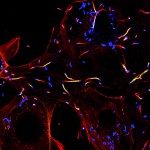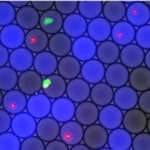Link to Pubmed [PMID] – 35133670
Link to DOI – 10.1002/eji.202149766
Eur J Immunol 2022 Feb; ():
Immunoglobulin G (IgG) is the predominant antibody class generated during infections and used for the generation of therapeutic antibodies. Antibodies are mainly characterized in or generated from animal models that support particular infections, respond to particular antigens or allow the generation of hybridomas. Due to the availability of numerous transgenic mouse models and the ease of performing bioassays with human blood cells in vitro, most antibodies from species other than mice and humans are tested in vitro using human cells and/or in vivo using mice. In this process, it is expected, but not yet systematically documented, that IgG from these species interact with human or mouse IgG receptors (FcγRs). In this study, we undertook a systematic assessment of binding specificities of IgG from various species to the families of mouse and human FcγRs, including their polymorphic variants. Our results document the specific binding patterns for each of these IgG (sub)classes, reveal possible caveats of antibody-based immunoassays, and will be a useful reference for the transition from one animal model to preclinical mouse models or human cell-based bioassays. This article is protected by copyright. All rights reserved.







